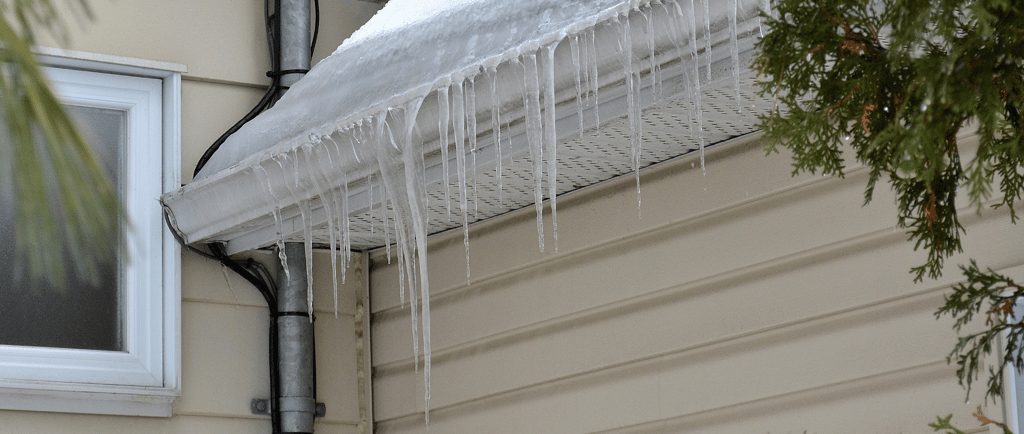Ice Damming: What It Is and How to Prevent Costly Damage
Winter in Manitoba brings plenty of snow and freezing temperatures, and with that comes a common but often overlooked problem—ice damming. If left unchecked, ice dams can cause serious damage to your roof, attic, and interior walls. Here’s what you need to know about ice dams, how they form, and what you can do to prevent them...
RESIDENTIAL


Winter in Manitoba brings plenty of snow and freezing temperatures, and with that comes a common but often overlooked problem—ice damming. If left unchecked, ice dams can cause serious damage to your roof, attic, and interior walls. Here’s what you need to know about ice dams, how they form, and what you can do to prevent them.
What Is an Ice Dam?
An ice dam is a ridge of ice that forms at the edge of your roof, preventing melting snow from draining off. Instead of flowing into your gutters, the trapped water backs up under your shingles, leading to leaks, insulation damage, and even mold growth.
How Do Ice Dams Form?
Ice dams occur when three conditions are present:
Snow on the Roof – Snow provides the raw material for ice dams. The more snow accumulation, the greater the risk.
Uneven Roof Temperatures – Heat from your attic warms the roof, causing the snow to melt. The water flows down the roof until it reaches the colder eaves, where it refreezes.
Repeated Freeze-Thaw Cycles – This process continues, creating a thick ridge of ice that blocks water from draining properly.
Signs You Have an Ice Dam
Large icicles hanging from your gutters or eaves
Water stains on ceilings or walls inside your home
Ice buildup along the roof edge
Peeling paint or damaged siding near the roofline
How to Prevent Ice Damming
The best way to deal with ice dams is to prevent them before they start. Here’s how:
Improve Attic Insulation – Poor insulation allows heat to escape, warming the roof unevenly. Adding proper insulation keeps your attic temperature consistent and reduces snow melt.
Ensure Proper Ventilation – Good airflow in the attic helps keep the roof cool and prevents warm air from collecting under the shingles. Ridge vents, soffit vents, and attic fans all help maintain proper ventilation.
Clear Snow from the Roof – After a heavy snowfall, use a roof rake to remove excess snow from the lower portion of your roof. This helps prevent melting and refreezing at the eaves.
Seal Air Leaks – Warm air from your home can escape into the attic through gaps around light fixtures, chimneys, or attic access points. Sealing these leaks helps maintain a consistent temperature.
Keep Gutters Clear – Clogged gutters can contribute to ice buildup. Regularly clean out leaves and debris so melting snow can drain properly.
What to Do If You Have an Ice Dam
If an ice dam has already formed, avoid using salt or chipping away at the ice, as this can damage your roof. Instead:
Use a calcium chloride ice melt product in a nylon stocking and place it on the ice dam to help melt a drainage path.
If water is leaking into your home, act quickly to remove or contain the water and prevent further damage.
For severe cases, call a professional to safely remove the ice without damaging your roof.
Need a Roof Inspection? Just Call Joe!
If you’re concerned about ice dams or potential roof damage, Just Call Joe Inspections can help. Our team can assess your attic insulation, ventilation, and roof condition to prevent future issues before they turn into expensive repairs.